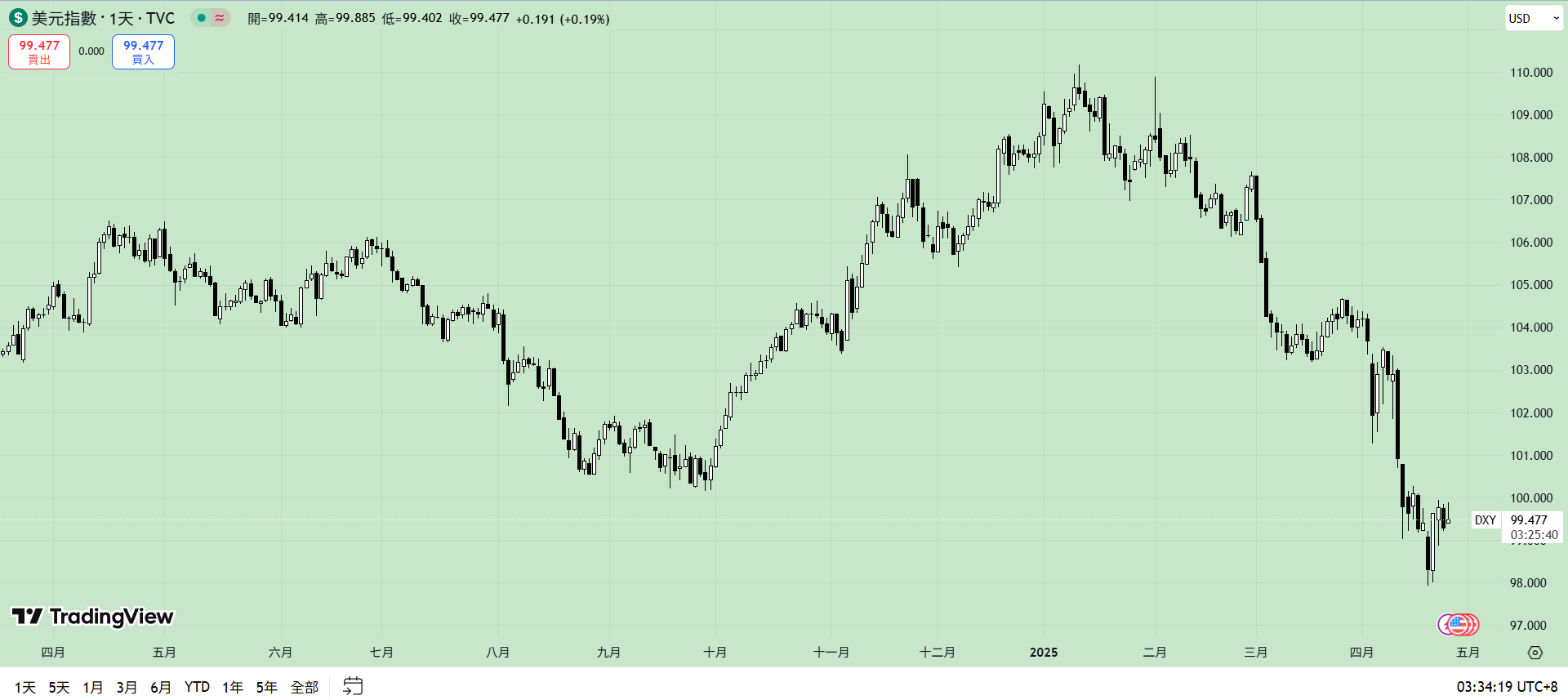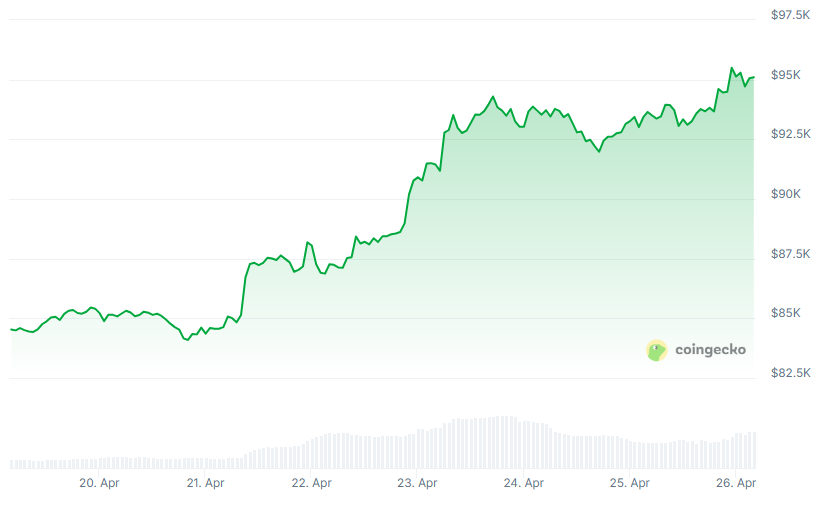According to Bloomberg reporting, as of April 25, 2025, the US dollar index has fallen nearly 9% since President Trump officially took office on January 20. If this downward trend cannot be reversed, it will become the largest dollar index decline during the first 100 days of a US presidency since the Nixon era's abandonment of the gold standard (1971).

Tariff Policies Severely Damage the Dollar, Experts Pessimistic About Long-Term Trend
The key factor causing the dollar's decline is undoubtedly the comprehensive tariff policies implemented by Trump since taking office this year. These policies include imposing high new tariffs on China and other US trading partners, accompanied by tough trade rhetoric, causing investors to shift funds away from US assets and weakening the dollar's attractiveness. On this, BMO Global Asset Management's director Bipin Lai commented:
The dollar's universality and its role in international trade and finance depend on solid institutions, low trade and capital barriers, and predictable foreign policy. However, now? These foundations are becoming unstable, and the trend of unfavorable global asset allocation for the dollar has already begun, and we believe this will be a structural transformation.
Additionally, multiple institutions have expressed pessimism about the dollar's prospects. UBS has lowered its dollar forecast for the second time in less than two months, emphasizing that the dollar's performance will be affected by US-China confrontation. Deutsche Bank warned this week that the dollar will face a structural downward trend in the coming years, potentially causing its exchange rate against the euro to fall to its lowest level in over a decade. Moreover, market sentiment reflects a bearish atmosphere. According to the Commodity Futures Trading Commission data, as of the week of April 15, speculative traders, including hedge funds and asset management companies, had bearish bets on the dollar reaching $19 billion, the highest level since October 2024.
Bitcoin's Anti-Inflation Characteristics Attract Attention
It is not difficult to understand that the implementation of tariff policies will not only affect the relationship between the US and its major trading partners but also exacerbate inflationary pressures, thereby prompting investors to turn to other currencies and assets such as the euro, Swiss franc, yen, and gold. Furthermore, trade uncertainty caused by tariffs will weaken the dollar's attractiveness as a global reserve currency, and investors' concerns about the US economic outlook have further increased downward pressure on the dollar.
Against the backdrop of a weakening dollar, Bitcoin has gradually rebounded. Data shows that its correlation with US stocks is gradually decreasing, while its correlation with gold is significantly increasing, indicating that its anti-inflation characteristics are being gradually discovered by the market. This is due to Bitcoin's decentralized nature and limited supply, making it more attractive in an environment of increasing uncertainty. On this, an analyst from Galaxy Digital, a cryptocurrency investment company, recently stated: "Bitcoin is transitioning from a speculative asset to a hedging asset, with its price linkage to gold increasing, showing the market's growing confidence in its long-term value."







